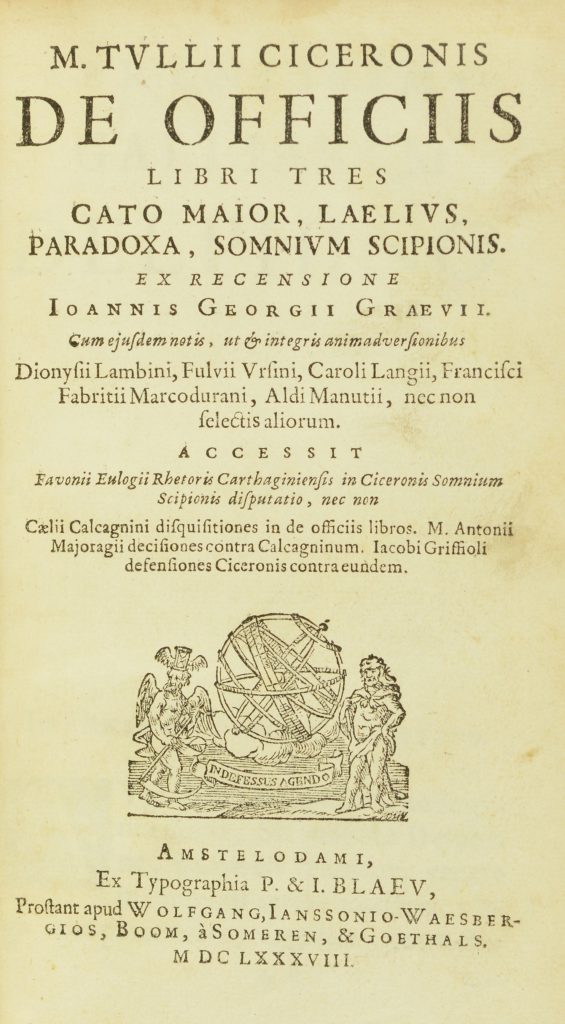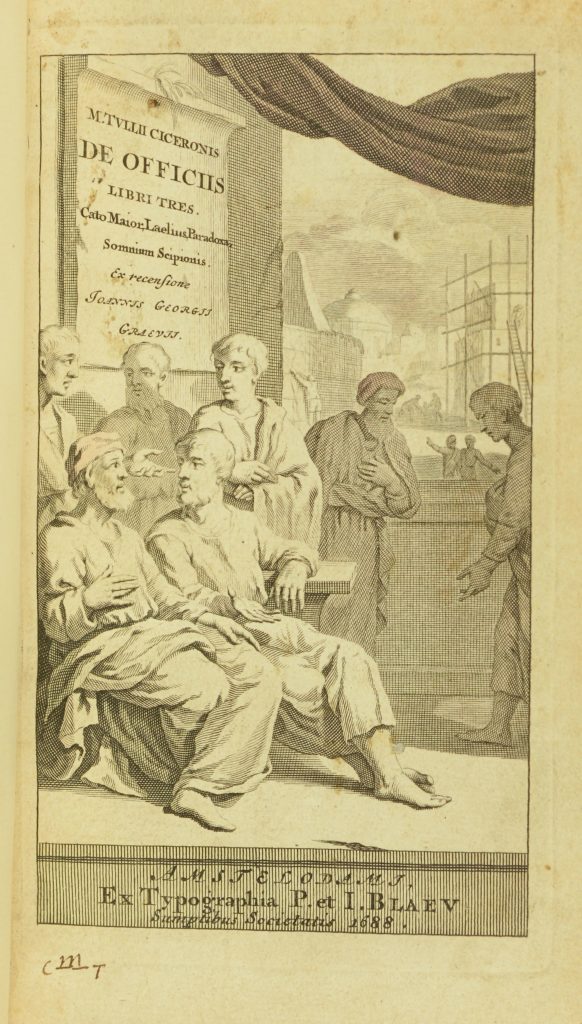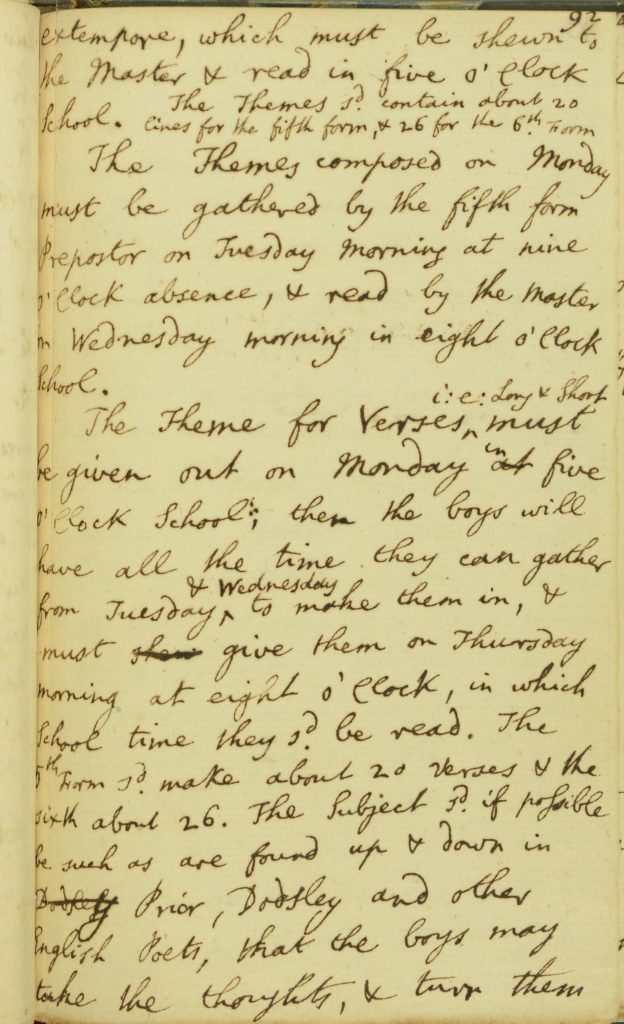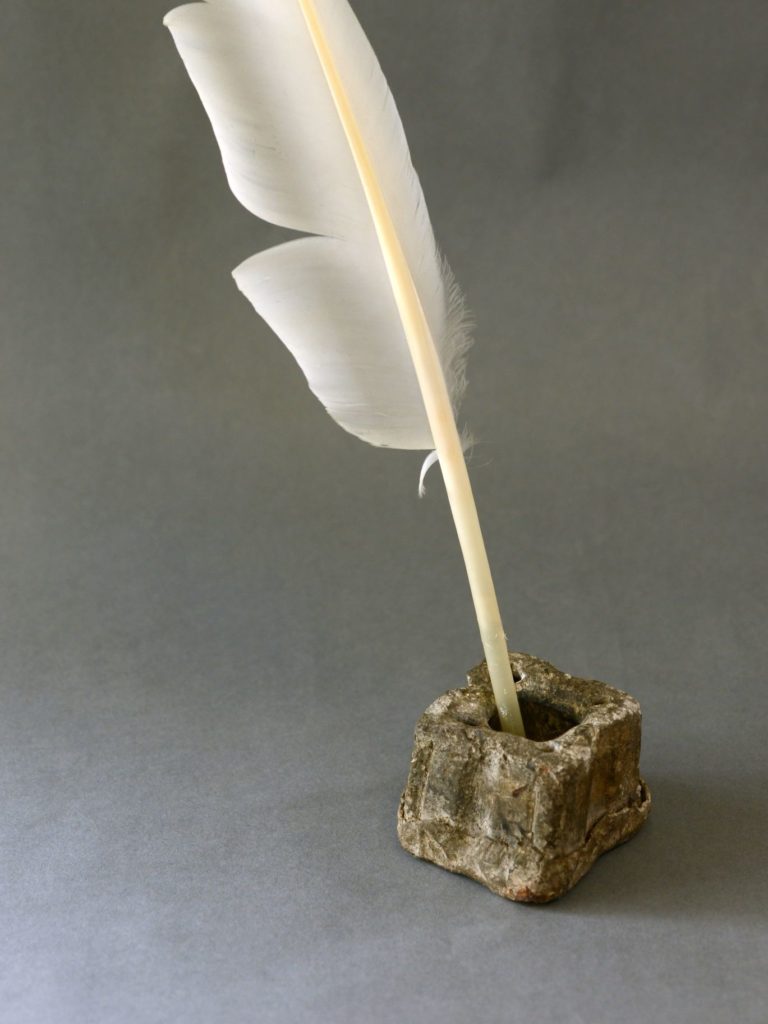Mr Nicholls once asked Mr Gray, if he recollected when he first felt in himself the strong predilection to poetry, and he replied, ‘I believe it was when I began at Eton to read Virgil for my own amusement, and not in school-hours as a task’.
E. S. Creasy, Memoirs of eminent Etonians, London: R. Bentley, 1850.
Gray was born in 1716 in the City of London, where his father was a scrivener, and his mother co-owned a millinery business. Of their 12 children, only Thomas survived childhood. In 1725 the introverted and delicate boy of nine was sent to be educated at Eton College, encouraged by his beloved mother and helped by his uncles Robert and William Antrobus, who were both Assistant Masters at the school.
Eton had been founded as a grammar school, and the curriculum was based mainly on the grammatical study of Latin, translations from and into Latin and the repetition of verses by heart. Like the other boys, Gray learned his first Latin words from ‘Lily’s Grammar’, the standard textbook used in grammar schools since 1540, and later studied Cicero and other classics. In the higher forms he began translating English verses into Latin.
But a poet was emerging from the schoolboy. On the back of one of his Latin exercises, he annotated what is probably his first English verse: ‘The rude Columbus of an infant world’.

Eton’s schoolbooks
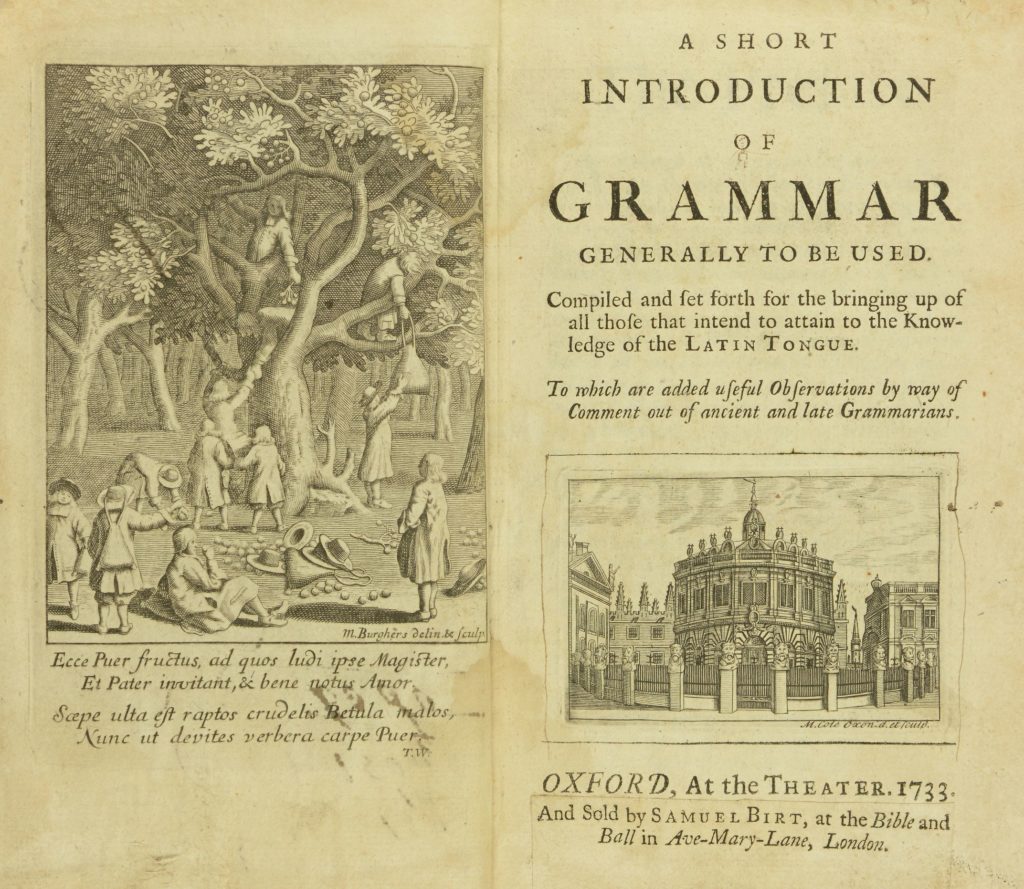
Lily’s Grammar
Known as ‘Lily’s Grammar’, this textbook written by the first high Master of St Paul’s School was the most popular Latin grammar used at Eton College in the early modern period. Published around 1540, it was used by Etonians for at least 300 years. A young Thomas Gray probably learned Latin from an edition similar to this one which is part of the library’s collection of schoolbooks.
Note the schoolboy’s doodle on the letter ‘O’ in the title!
William Lily, A short introduction of grammar, Oxford: at the Theater, 1733 [ECL Ic4.5.22(01)]
In upper forms, Gray read and studied Cicero, one of Rome’s greatest orators and the author of numerous treatises and letters on rhetoric, philosophy, and politics, studied by generations of students for learning both Latin prose and Roman history. This was Gray’s personal copy, signed and dated while he was a student at Eton in 1733. This book was so valuable to him that he brought it to Cambridge when he moved there a year later.
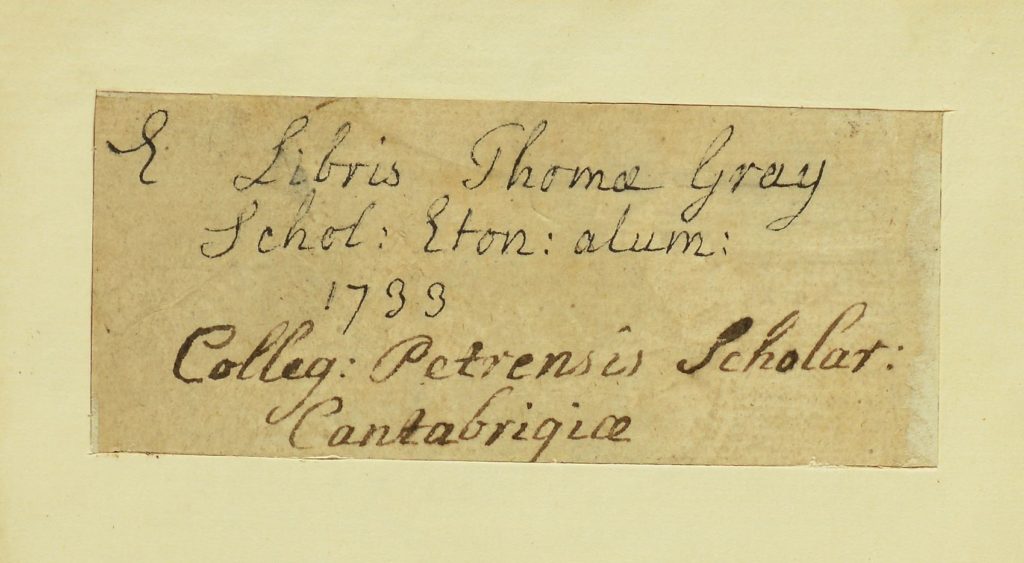
Composing Latin verses
This document was drawn up in 1766 by Thomas James, later headmaster of Rugby School, while he was still studying at Eton, and describes the system of education that Gray would have experienced 30 or 40 years earlier. All boys in the fifth and sixth forms were required to compose three Latin exercises every week, both in prose and in verse. James suggests that boys could find inspiration for the subject of their composition in the works of Matthew Prior, Robert Dodsley and other English poets of the time. Gray soon became skilled in composing Latin verses, inspired by classical and contemporary models.
Thomas James, An account of Eton discipline, 1766 [ECL ED 518]; Quill and inkwell [MEL.185-2010]
Gray’s Latin Exercise
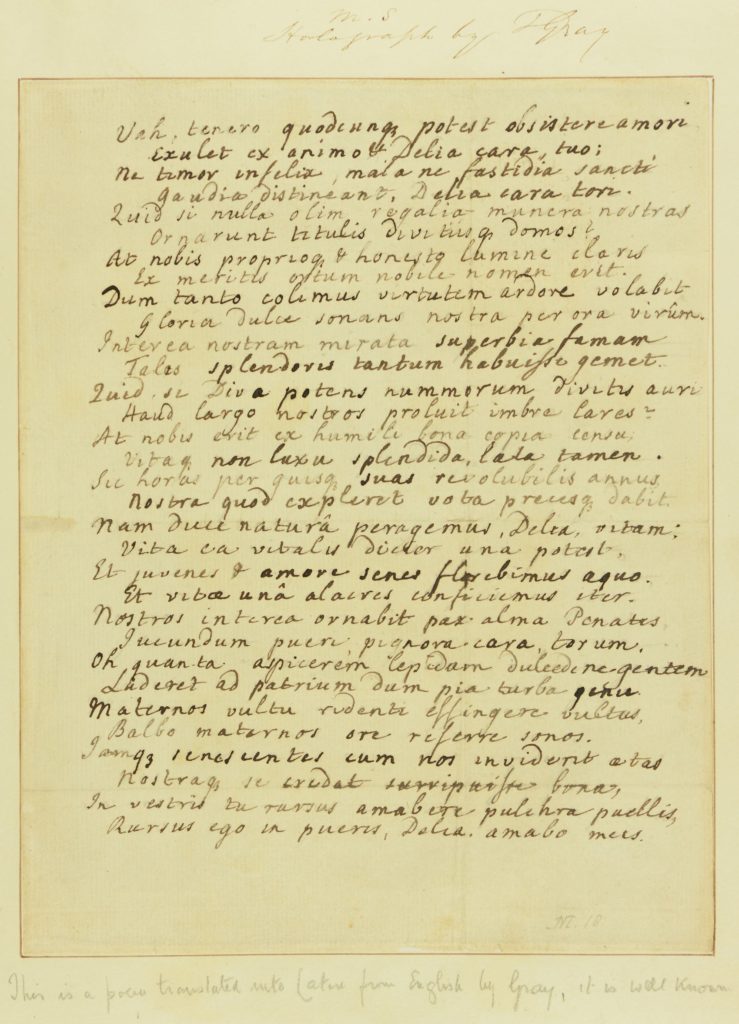
This manuscript leaf contains Gray’s school translation into Latin verse of an anonymous poem from David Lewis’s anthology Miscellaneous poems by several hands, published in 1726. The verso of the manuscript bears a single line of English verse by Gray which reads: ‘The rude Columbus of an infant world’. This line has been associated with the drafting of the ‘Elegy Written in a Country Churchyard’, but its appearance here suggests it to be of a much earlier origin in Gray’s work. It demonstrates that he started experimenting quite early in writing verses in English. The sensitivity and deep introspection which were later developed in the Elegy are already evident here. Mr Nicholls once asked Mr Gray, if he recollected when he first felt in himself the strong predilection to poetry, and he replied, ‘I believe it was when I began at Eton to read Virgil for my own amusement, and not in school-hours as a task’.
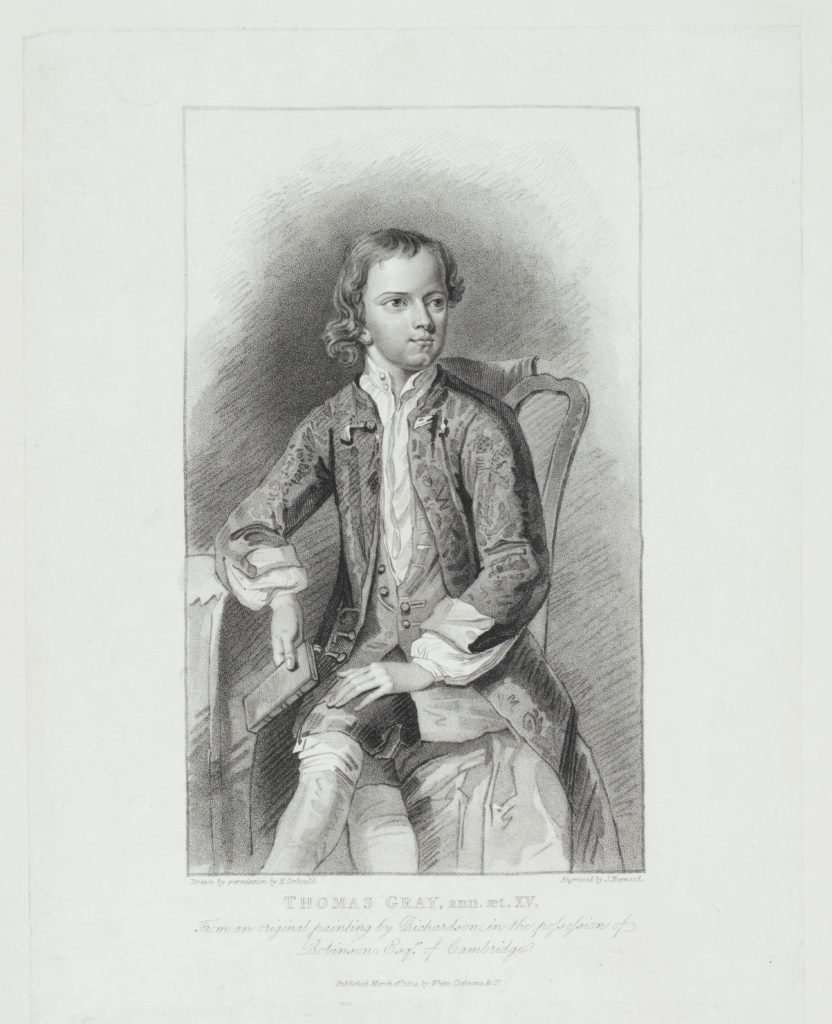
James Hopwood the Younger after Henry Courbould, ‘Thomas Gray ann. aet. XV’, aquatint [or stipple engraving], from an original by Jonathan Richardson senior, 1814 [FDA-E.616-2013]


